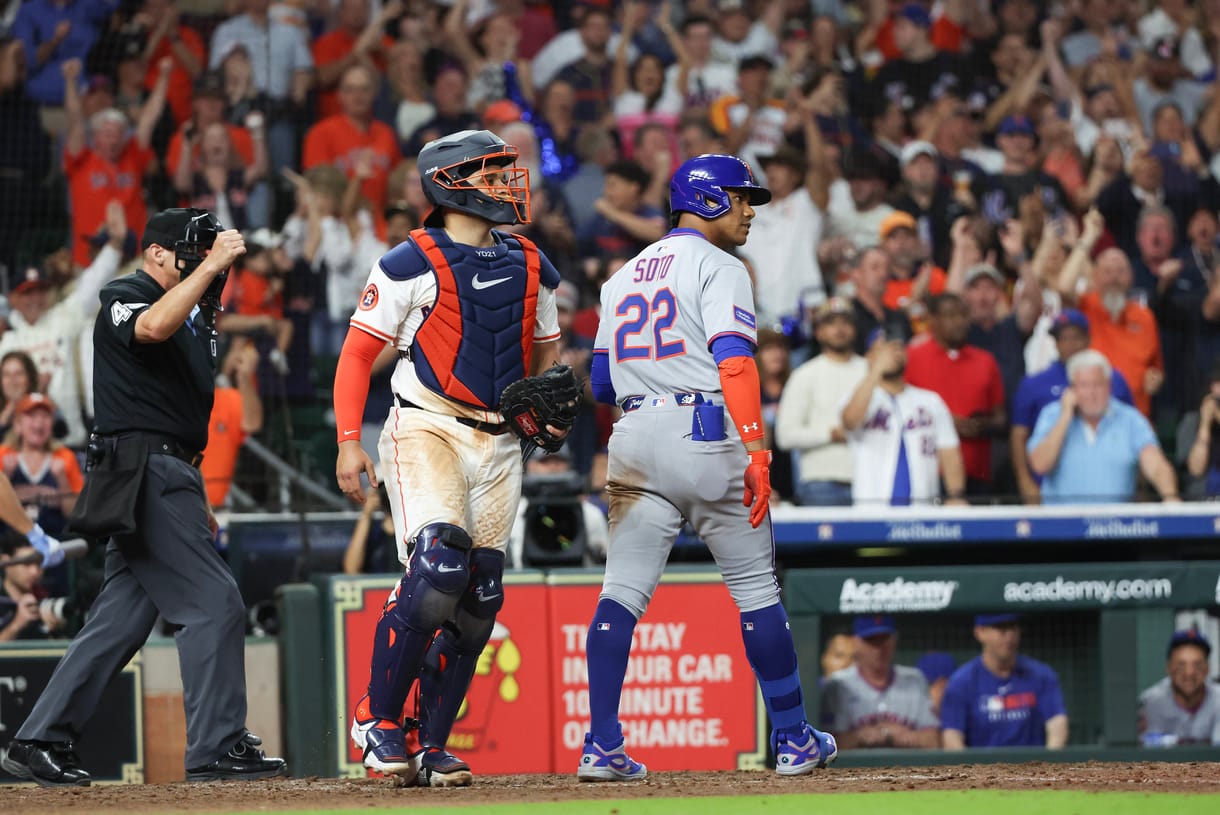
Sometimes, watching a superstar struggle feels like watching a symphony miss a few notes—still beautiful, but unsettling. That’s what 2025 has felt like for New York Mets fans witnessing Juan Soto fail to put up his usual excellent numbers.
His bat, once a thunderous force feared by pitchers across the league, now feels more like a whisper. And it’s not just emotion talking—there’s data backing the unease.
Soto has posted a 129 wRC+ this season, a number most hitters would dream of. But Soto isn’t most hitters. His 2024 campaign with the Yankees featured a 180 wRC+, and his career mark sits at 157. Good is not good enough when you’re used to generational excellence.

The power drop isn’t just in your head—it’s in the numbers
While Soto’s .429 slugging percentage may not seem catastrophic on the surface, it’s quietly historic—for the wrong reasons.
If the season ended today, it would mark the lowest slugging figure of his career. It’s not just that the home runs aren’t coming. It’s that the ability to hit them appears to be slipping.
The cause? Look no further than his bat speed. In 2023, Soto averaged a 74.6 mph swing. That ticked up to 75.4 mph in 2024, coinciding with his career-high 41 home runs.
This year, that number has dipped to 73.3 mph—a small number that means a lot in the high-stakes world of major league hitting.
Eno Sarris sounds the alarm: Can Soto reclaim his elite power?
Baseball researcher Eno Sarris, known for turning numbers into narratives, didn’t sugarcoat his concern. Speaking on Foul Territory, he highlighted a harsh truth: “There’s a chance we won’t see the 40-homer Juan Soto again unless his bat speed picks back up.”
There’s a chance we won’t see the 40-homer Juan Soto again unless his bat speed picks back up, says @EnoSarris.
“It does mean something that he’s lost bat speed. It probably means he’s lost that sort of elite upper-end power.” pic.twitter.com/Z2Rq5Tglvm
— Foul Territory (@FoulTerritoryTV) May 21, 2025
That statement hit fans like a cold wind in April. Not because it’s definitive, but because it’s plausible. When Soto’s bat was faster, the ball soared. Now, it’s struggling to leave the park.
The analogy here is simple: imagine a race car built for speed suddenly losing its top gear. It can still compete, but the edge, that thrilling difference-maker, is gone. That’s what Soto’s bat speed means.
It’s the difference between a flyout and a walk-off.

What’s causing the slowdown? Possibilities linger, answers don’t
Several theories are swirling. Is Soto pacing himself for the grueling length of a 162-game season? Could he be nursing a nagging injury that hasn’t been disclosed?
There’s no confirmed injury report, but players often play through minor issues without letting the public in on it.
What we do know is that the bat speed is measurably lower.
The long season offers time—but will it be enough?
There’s a reason baseball fans preach patience. The season is long, the weather warms up, and players often find their rhythm after a sluggish spring. Soto may yet roar back into form. The possibility of a hot July surge is very real.
But the concern today is not unfounded. Numbers don’t lie, and they’re whispering something Mets fans hoped they’d never hear about their marquee star: he’s not himself.
Popular reading:
Mets’ young infielder has regained his confidence and is blossoming into a star